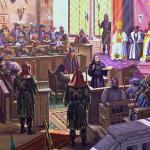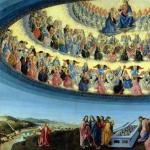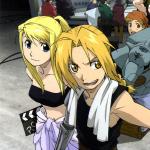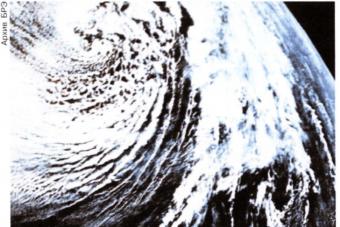The spinal cord is dressed in three connective tissue membranes, meninges. These shells are as follows, if you go from the surface inward: hard shell, dura mater; arachnoid, arachnoidea, and soft shell, pia mater. Cranially, all 3 shells continue into the same shells of the brain.
The hard shell of the spinal cord, dura mater spinalis, covers the outside of the spinal cord in the form of a bag. It does not adhere closely to the walls of the spinal canal, which are covered with periosteum. The latter is also called the outer sheet of the hard shell. Between the periosteum and the hard shell is the epidural space, cavitas epiduralis. It contains fatty tissue and venous plexuses, plexus vendsi vertebrales interni, into which venous blood flows from the spinal cord and vertebrae.
Cranially, the hard shell fuses with the edges of the foramen magnum of the occipital bone, and caudally ends at the level of II-III sacral vertebrae, tapering in the form of a thread, filum diirae matris spinalis, which is attached to the coccyx.
The arachnoid membrane of the spinal cord, arachnoidea spinalis, in the form of thin crossbars of the subdural space, spatium subdurale. Between the arachnoid and the pia mater directly covering the spinal cord is the subarachnoid space, cavitas subarachnoidalis, in which the brain and nerve roots lie freely, surrounded by a large amount of cerebrospinal fluid, liquor cerebrospinalis. Cerebrospinal fluid is taken from this space for analysis. This space is especially wide in the lower part of the arachnoid sac, where it surrounds the cauda equina of the spinal cord (cisterna terminalis). The fluid filling the subarachnoid space is in continuous communication with the fluid of the subarachnoid spaces and ventricles of the brain.
Between the arachnoid and the pia mater covering the spinal cord in the cervical region behind, along the midline, a septum, septum cervie ale intermedium, is formed. In addition, on the sides of the spinal cord in the frontal plane there is a dentate ligament, ligamentum denticulatum, consisting of 19-23 teeth passing between the anterior and posterior roots. The dentate ligaments serve to hold the brain in place, preventing it from stretching out in length. Through both ligg. denticulatae subarachnoid space is divided into anterior and posterior sections.
The soft shell of the spinal cord, pia mater spinalis, covered from the surface with endothelium, directly envelops the spinal cord and contains vessels between its two sheets, together with which it enters its furrows and the medulla, forming perivascular spaces around the vessels.
Conclusion
The spinal cord is a section of the central nervous system of vertebrates and humans, located in the spinal canal; more than other parts of the central nervous system retained the features of the primitive brain tube of chordates. The spinal cord has the form of a cylindrical cord with an internal cavity (spinal canal); it is covered with three meninges: soft, or vascular (internal), arachnoid (middle) and hard (outer), and is held in a constant position with the help of ligaments going from the membranes to the inner wall of the bone canal. The space between the soft and arachnoid membranes (subarachnoid) and the brain itself, as well as the spinal canal, are filled with cerebrospinal fluid. The anterior (upper) end of the spinal cord passes into the medulla oblongata, the posterior (lower) end into the terminal thread.
The spinal cord is conditionally divided into segments according to the number of vertebrae. A person has 31 segments: 8 cervical, 12 thoracic, 5 lumbar, 5 sacral and 1 coccygeal. A group of nerve fibers departs from each segment - radicular threads, which, when combined, form the spinal roots. Each pair of roots corresponds to one of the vertebrae and leaves the spinal canal through the opening between them. The posterior spinal roots carry sensory (afferent) nerve fibers, through which impulses from the receptors of the skin, muscles, tendons, joints, and internal organs are transmitted to the spinal cord. The anterior roots contain motor (efferent) nerve fibers, along which impulses from the motor or sympathetic cells of the spinal cord are transmitted to the periphery (to skeletal muscles, vascular smooth muscles and internal organs). The posterior and anterior roots are connected before entering the intervertebral foramen, forming mixed nerve trunks at the exit from the spine.
The spinal cord consists of two symmetrical halves connected by a narrow bridge; nerve cells and their short processes form gray matter around the spinal canal. The nerve fibers that make up the ascending and descending pathways form white matter along the edges of the gray matter. Outgrowths of gray matter (anterior, posterior and lateral horns) white matter is divided into three parts - anterior, posterior and lateral cords, the boundaries between which are the exit points of the anterior and posterior spinal roots.
The activity of the spinal cord is reflex in nature. Reflexes arise under the influence of afferent signals entering the spinal cord from receptors that are the beginning of the reflex arc, as well as under the influence of signals going first to the brain, and then descending into the spinal cord along descending pathways. The most complex reflex reactions of the spinal cord are controlled by various centers of the brain. In this case, the spinal cord serves not only as a link in the transmission of signals coming from the brain to the executive organs: these signals are processed by intercalary neurons and combined with signals coming at the same time from peripheral receptors.
Sheaths of the spinal cord. Dura mater, arachnoid mater, pia mater of the spinal cord. The spinal cord is dressed in three connective tissue membranes, meninges, originating from the mesoderm. These shells are as follows, if you go from the surface inward: hard shell, duramater; arachnoid, arachnoidea, and soft shell, piamater. Cranially, all three shells continue into the same shells of the brain.
1. The hard shell of the spinal cord, duramaterspinalis, wraps the outside of the spinal cord in the form of a bag. It does not adhere closely to the walls of the spinal canal, which are covered with periosteum. The latter is also called the outer sheet of the hard shell. Between the periosteum and the hard shell is the epidural space, cavitasepiduralis. It contains fatty tissue and venous plexuses - plexus venosivertebrales interni, into which venous blood flows from the spinal cord and vertebrae. Cranially, the hard shell grows together with the edges of the large foramen of the occipital bone, and caudally ends at the level of II-III sacral vertebrae, tapering in the form of a thread, filumduraematrisspinalis, which is attached to the coccyx.
2. The arachnoid membrane of the spinal cord, arachnoideaspinalis, in the form of a thin transparent avascular sheet, adheres from the inside to the hard shell, separated from the latter by a slit-like subdural space pierced by thin crossbars, spatium subdurale. Between the arachnoid and the pia mater directly covering the spinal cord is the subarachnoid space, cavitassubarachnoidalis, in which the brain and nerve roots lie freely, surrounded by a large amount of cerebrospinal fluid, liquorcere-brospinalis. This space is especially wide in the lower part of the arachnoid sac, where it surrounds the caudaequina of the spinal cord (sisternaterminalis). The fluid filling the subarachnoid space is in continuous communication with the fluid of the subarachnoid spaces of the brain and cerebral ventricles. Between the arachnoid and the pia mater covering the spinal cord in the cervical region behind, along the midline, a septum, septumcervicdleintermedium, is formed. In addition, on the sides of the spinal cord in the frontal plane is the dentate ligament, lig. denticulatum, consisting of 19 - 23 teeth passing between the anterior and posterior roots. The dentate ligaments serve to hold the brain in place, preventing it from stretching out in length. Through both ligg. denticulatae subarachnoid space is divided into anterior and posterior sections.
3. The soft shell of the spinal cord, piamaterspinalis, covered from the surface with endothelium, directly envelops the spinal cord and contains vessels between its two sheets, together with which it enters its furrows and the medulla, forming perivascular lymphatic spaces around the vessels.
8. Development of the brain (brain bubbles, parts of the brain).
The brain is located in the cranial cavity. Its upper surface is convex, and the lower surface - the base of the brain - is thickened and uneven. In the region of the base, 12 pairs of cranial (or cranial) nerves depart from the brain. In the brain, the cerebral hemispheres (the newest part in evolutionary development) and the brainstem with the cerebellum are distinguished. The mass of the brain of an adult is on average 1375 g in men, 1245 g in women. The mass of the brain of a newborn is on average 330 - 340 g. In the embryonic period and in the first years of life, the brain grows intensively, but only by the age of 20 reaches its final size.
Scheme brain development
A. Neural tube in longitudinal section, three cerebral vesicles are visible (1; 2 and 3); 4 - part of the neural tube from which the spinal cord develops.
B. Brain of the fetus from the side (3rd month) - five brain bubbles; 1 - terminal brain (first bubble); 2 - diencephalon (second bubble); 3 - midbrain (third bubble); 4 - hindbrain (fourth bubble); 5 - medulla oblongata (fifth brain bladder).
The brain and spinal cord develop on the dorsal (dorsal) side of the embryo from the outer germ layer (ectoderm). In this place, the neural tube is formed with an expansion in the head section of the embryo. Initially, this expansion is represented by three brain bubbles: anterior, middle and posterior (diamond-shaped). In the future, the anterior and rhomboid bubbles divide and five brain bubbles are formed: final, intermediate, middle, posterior and oblong (additional).
In the process of development, the walls of the cerebral vesicles grow unevenly: either thickening or remaining thin in some areas and pushing into the cavity of the bladder, participating in the formation of the vascular plexuses of the ventricles.
The remains of the cavities of the cerebral vesicles and the neural tube are the cerebral ventricles and the central canal of the spinal cord. From each cerebral vesicle, certain parts of the brain develop. In this regard, five main sections are distinguished from the five cerebral vesicles in the brain: medulla oblongata, hindbrain, midbrain, diencephalon, and terminal brain.
Spinal cord dressed in three connective tissue membranes, meninges, originating from the mesoderm. These shells are as follows, if you go from the surface inward: hard shell, dura mater; arachnoid shell, arachnoidea, and soft shell, pia mater.
Cranially, all three shells continue into the same shells of the brain.
1. Dura mater of the spinal cord, dura mater spinalis, envelops the spinal cord in the form of a bag on the outside. It does not adhere closely to the walls of the spinal canal, which are covered with periosteum. The latter is also called the outer sheet of the hard shell.
Between the periosteum and the hard shell is the epidural space, cavitas epiduralis. It contains fatty tissue and venous plexuses - plexus venosi vertebrales interni, into which venous blood flows from the spinal cord and vertebrae. Cranially, the hard shell fuses with the edges of the foramen magnum of the occipital bone, and caudally ends at the level of II-III sacral vertebrae, tapering in the form of a thread, filum durae matris spinalis, which is attached to the coccyx.
arteries. The hard shell receives from the spinal branches of the segmental arteries, its veins flow into the plexus venosus vertebralis interims, and its nerves come from the rami meningei of the spinal nerves. The inner surface of the hard shell is covered with a layer of endothelium, as a result of which it has a smooth, shiny appearance.
2. arachnoid mater of the spinal cord, arachnoidea spinalis, in the form of a thin transparent avascular leaf, adjoins from the inside to the hard shell, separating from the latter by a slit-like subdural space pierced by thin crossbars, spatium subdurale.
Between the arachnoid and the pia mater directly covering the spinal cord is the subarachnoid space, cavitas subarachnoidalis, in which the brain and nerve roots lie freely, surrounded by a large amount of cerebrospinal fluid, liquor cerebrospinalis. This space is especially wide in the lower part of the arachnoid sac, where it surrounds the cauda equina of the spinal cord (sisterna terminalis). The fluid that fills the subarachnoid space is in continuous communication with the fluid of the subarachnoid spaces of the brain and cerebral ventricles.
Between the arachnoid membrane and the soft membrane covering the spinal cord in the cervical region behind, along the midline, a septum, septum cervicdle intermedium, is formed. In addition, on the sides of the spinal cord in the frontal plane is the dentate ligament, lig. denticulatum, consisting of 19-23 teeth passing between the anterior and posterior roots. The dentate ligaments serve to hold the brain in place, preventing it from stretching out in length. Through both ligg. denticulatae subarachnoid space is divided into anterior and posterior sections.
3. Pia mater of the spinal cord, pia mater spinalis, covered from the surface with endothelium, directly envelops the spinal cord and contains vessels between its two sheets, together with which it enters its furrows and the medulla, forming perivascular lymphatic spaces around the vessels.
Vessels of the spinal cord. Ah. spinales anterior et posterior, descending along the spinal cord, are interconnected by numerous branches, forming a vascular network (the so-called vasocorona) on the surface of the brain. Branches depart from this network, penetrating, together with the processes of the soft shell, into the substance of the brain.
Veins are similar in general to arteries and ultimately empty into the plexus venosi vertebrales interni.
TO lymphatic vessels of the spinal cord can be attributed to the perivascular spaces around the vessels, communicating with the subarachnoid space.

The spinal cord is covered with three membranes: external - hard, middle - arachnoid and internal - vascular (Fig. 11.14).
hard shell The spinal cord consists of dense, fibrous connective tissue and starts from the edges of the foramen magnum in the form of a bag, which descends to the level of the 2nd sacral vertebra, and then goes as part of the final thread, forming its outer layer, to the level of the 2nd coccygeal vertebra. The dura mater of the spinal cord surrounds the outside of the spinal cord in the form of a long sac. It is not adjacent to the periosteum of the spinal canal. Between it and the periosteum is the epidural space, in which fatty tissue and the venous plexus are located.
11.14. Sheaths of the spinal cord.
Arachnoid The spinal cord is a thin and transparent, avascular, connective tissue sheet located under the dura mater and separated from it by the subdural space.
choroid the spinal cord is tightly attached to the substance of the spinal cord. It is made up of loose connective tissue rich in blood vessels that supply blood to the spinal cord.
There are three spaces between the membranes of the spinal cord: 1) supra-hard (epidural); 2) confirmed (subdural); 3) subarachnoid.
Between the arachnoid and soft shells is the subarachnoid (subarachnoid) space containing cerebrospinal fluid. This space is especially wide at the bottom, in the region of the cauda equina. The cerebrospinal fluid that fills it communicates with the fluid of the subarachnoid spaces of the brain and its ventricles. On the sides of the spinal cord in this space lies the dentate ligament, which strengthens the spinal cord in its position.
Superhard space(epidural) is located between the dura mater and the periosteum of the spinal canal. It is filled with fatty tissue, lymphatic vessels and venous plexuses, which collect venous blood from the spinal cord, its membranes and the spinal column.
Confirmed space(subdural) is a narrow gap between the hard shell and the arachnoid.
A variety of movements, even very abrupt ones (jumps, somersaults, etc.), do not impair the reliability of the spinal cord, since it is well fixed. At the top, the spinal cord is connected to the brain, and at the bottom, its terminal thread fuses with the periosteum of the coccygeal vertebrae.
In the region of the subarachnoid space, there are well-developed ligaments: the dentate ligament and the posterior subarachnoid septum. dentate ligament located in the frontal plane of the body, starting both to the right and to the left of the lateral surfaces of the spinal cord, covered with a pia mater. The outer edge of the ligament is divided into teeth that reach the arachnoid and are attached to the dura mater so that the posterior, sensory, roots pass behind the dentate ligament, and the anterior, motor roots, in front. Posterior subarachnoid septum located in the sagittal plane of the body and runs from the posterior median sulcus, connecting the pia mater of the spinal cord with the arachnoid.
For the fixation of the spinal cord, the formation of a supra-solid space (fatty tissue, venous plexuses), which act as an elastic pad, and the cerebrospinal fluid, in which the spinal cord is immersed, are also important.
All factors that fix the spinal cord do not prevent it from following the movements of the spinal column, which are very significant in certain positions of the body (gymnastic bridge, wrestling bridge, etc.) from the continents.
MEATHERS OF THE SPINAL CORD
Spinal cord dressed in three connective tissue membranes, meninges, originating from the mesoderm around the brain tube. These shells are as follows, if you go from the surface inward: hard shell, dura mater, or pachymeninx; arachnoid, arachnoidea, and choroid, pia mater. The last two shells, in contrast to the first, are also called the soft shell, leptomeninx. Cranially, all three shells continue into the same shells of the brain.
1. Dura mater of the spinal cord, dura mater spinalis, envelops the spinal cord in the form of a bag on the outside. It does not adhere closely to the walls of the spinal canal, which are covered with their own periosteum (endorachis). The latter is also called the outer sheet of the hard shell. Between the endorachis and the hard shell is the epidural space, cavum epidurale. It contains fatty tissue and venous plexuses - plexus venosi vertebrates interni, into which venous blood flows from the spinal cord and vertebrae. Cranially, the hard shell fuses with the edges of the foramen magnum of the occipital bone, and caudally ends at the level of II-III sacral vertebrae, tapering in the form of a thread, filum durae matris spinalis, which is attached to the coccyx.
The dura receives its arteries from the spinal branches of the segmental arteries, its veins flow into the plexus venosus vertebralis internus, and its nerves originate from the rami meningei of the spinal nerves. The inner surface of the hard shell is covered with a layer of endothelium, as a result of which it has a smooth, shiny appearance.
2. Arachnoid membrane of the spinal cord, arachnoidea spinalis, in the form of a thin transparent avascular sheet adjoins the hard shell from the inside, separating from the latter by a slit-like subdural space pierced by thin crossbars, cdvum subdural. Between the arachnoid and the choroid directly covering the spinal cord is the subarachnoid space, cavum subarachnoideale, in which the brain and nerve roots lie freely, surrounded by a large amount of cerebrospinal fluid, liquor cerebrospinal. This space is especially wide in the lower part of the arachnoid sac, where it surrounds the Cauda equina of the spinal cord (cisterna terminalis). The fluid filling the subarachnoid space is in continuous communication with the fluid of the subarachnoid spaces of the brain and cerebral ventricles. Between the arachnoid and the choroid covering the spinal cord in the cervical region behind along the midline, a septum, septum cervicale intermedium, is formed. In addition, on the sides of the spinal cord in the frontal plane is the dentate ligament, lig. denticulatum, consisting of 19-23 teeth passing between the anterior and posterior roots. The dentate ligaments serve to hold the brain in place, preventing it from stretching out in length. Through both ligg, denticulata, the subarachnoid space is divided into anterior and posterior sections.
3. Choroid of the spinal cord, pia mater spinalis, covered from the surface with endothelium, directly envelops the spinal cord and contains vessels between its 2 sheets, together with which it enters its furrows and the medulla, forming perivascular lymphatic spaces around the vessels.
Vessels of the spinal cord. aa. spinales anterior et posteriores, descending along the spinal cord, are interconnected by numerous branches, forming a vascular network (the so-called vasocorona) on the surface of the brain. Branches depart from this network, penetrating together with the processes of the choroid into the substance of the brain (Fig. 271).
Veins are similar in general to arteries and ultimately empty into the plexus venosi vertebrales interni. The lymphatic vessels of the spinal cord include perivascular spaces around the vessels that communicate with the subarachnoid space.





